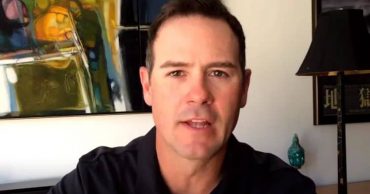In an official announcement dated May 8, 2019, Ultra Music Festival told its Ultranauts that it took their 20,000 post-event surveys seriously. The inaugural festival took place in 1999 at Collins Park in Miami Beach. The Ultra brand was founded in 1997 by Executive Producer, President and CEO Russel Faibisch. The first festival was held on one day and had about 10,000 attendees. It grew to three days and was held primarily at Bayfront Park. Its 20th anniversary in 2018 continued its tradition of remaining the world’s largest independent electronic music festival. Ultra has also grown to become an international brand, with festivals worldwide, while the flagship event has remained in Miami. But after two decades of events, the organization voluntarily terminated its license with the City of Miami, accompanied with thanks for the city’s part in hosting the waterfront event every March.
It was a decision which apparently had been festering for a while. In 2018, Miami Herald reporter Joey Flechas told the nuts and bolts of the story. The annual electronic dance music festival was opposed by residents who were more than outspoken about their protest. The noise and crowds had become overwhelming. They demanded that Ultra be ousted from Bayfront Park and they were persistent. Persistent enough to ignore the millions that a successful contract would bring to the City and loud enough to result in a unanimous Miami City Commission vote which rejected a multi-year contract for the festival; moving forward.
While residents living downtown were thrilled with the decision, the realty remains that the festival had a significant history of drawing in thousands of visitors each year, bringing hotel reservations, restaurant guests, and local employment to the area. It’s a financial boom that local businesses prudently and cheerfully have welcomed.
In years past, as the Ultra festival went through its understandable growing pains, many city residents focused with distaste on the traffic, the noise, a lot of drug use and arrests, and thousands of festival tourists roaming throughout downtown. One year, a concert crowd trampled a security guard while pushing over a fence so they could attend a concert without buying tickets. The mounds of trash left by concertgoers also brought public outcry. Water bottles and cigarettes piled up on downtown Miami streets and residents living across from the venue complained.
But, the 2019 Ultra Music Festival remained in Greater Miami, and moved to its new home at the Miami Marine Stadium & Historic Virginia Key Beach Park. On March 29, 30, and 31, 2019; Ultranauts from more than 105 countries filled the 21st festival with more than 170,000 electronic music fans in attendance. The event was livestreamed to 30 million additional viewers around the globe. There were performances on 8 different stages; each unique, with stellar production and sound, and the world’s most technologically advanced and diverse electronic talent. Plenty of new additions took place with extended performances and set times and music from 2pm to 2am daily, the line-up of top-tier, world-class talent continuing the festival’s tradition of being the premier electronic dance music festival.
The 2019 festival, while fabulous in terms of its extensive line-up and spectacular electronics, still garnered complaints from attendees. Rolling Stone reported that the relocation to Virginia Key island wasn’t without its own set of problems. Gathering information from several sources, the news magazine cited complaints about the shuttle system which broke down, stranding thousands and forcing them to walk “for miles” to find other transportation. Not wonderful, was that the University of Miami’s toadfish displayed acute levels of stress on the first concert day. The university keeps several species of research fish in ocean tanks near the festival venue and researchers discovered that the fish were very sensitive to the music vibrations.
From its small beginning, Ultra has grown and emerged with a reputation for top-drawer international production quality. But as it has grown from a friendly local event to the huge, not-to-be-missed fan favorite it is now there have been problems with what the Miami New Times refers to as “the attendee experience”. The logistics of dealing with a 100,000-plus group of people has always been difficult.
Miami New Times reporters have followed the Ultra festival since it began. They’ve noted that Miami’s variable weather has been problematic many years. Specific years included 2009, when the temperatures soared to the point where bottled water was sprayed on crowds so they wouldn’t overheat while Cut Copy was performing. Then in 2015, the rain was heavy and continuous, forcing acts to simply cancel. Humidity in Miami, for those in the know, also is a given.
This year, though it was fabulous to have so many performing venues, the walking distance to reach them turned into an unexpected trek. One reporter described the hike between the popular Resistance Island venue to the Miami Marine Stadium as “brutal”. Reaching the Carl Cox Megastructure took at least 10 minutes longer, on top of the twenty-minute walk time to see the Resistance act, and then head over to the Marine Stadium. Another major disappointment occurred when Deadmau5’s amazing cubev3 lost power due to a faulty Ultra generator. On the first festival day, the shuttle transportation failed to handle the crowds. Thousands of attendees began to run down the center of the Rickenbacker Causeway to get off the island as others shoved their way onto what shuttles they could.
Still, highlights of the festival continued to be the ever-popular Resistance, even with the awful walk to get there. Also commended was the comeback of Odesza, which hadn’t been part of Ultra for four years. The fans loved the horn section, the drum line, the extraordinary visuals and the incredible talent of BeachesBeaches and Catacombkid drumming away while standing on the DJ booth.
Final applause goes to Ultra for implementing It’s Leave No Trace policy in a big way. Every attendee was asked to leave absolutely no litter anywhere and to encourage others who were, to pick up their own trash. The litter had been an increasing bone of contention for Miami residents and concert goers were exhorted to care for the beauty of the venue.
The Ultra Music Festival organizers took steps to prohibit beach access to ecologically sensitive and historic areas. Many kinds of plastics, including confetti, balloons and a myriad of disposable drinkware was banned. Portable ashtrays were made available to cut down on cigarette trash. A wide range of pyrotechnics were excluded, debris management to minimize and eliminate food and liquid waste was implemented, and the last event of the festival included hiring crews which completely cleaned the festival grounds after it was over.
Ultra took responsibility to prevent pollution and maintain the ecological beauty enjoyed by concert goers. The world-famous festival remains committed to engaging the local community, preserving its natural venues, and responsibly preventing pollution while presenting the most cutting-edge electronic music performances in more than 30 countries.
 Follow Us
Follow Us





